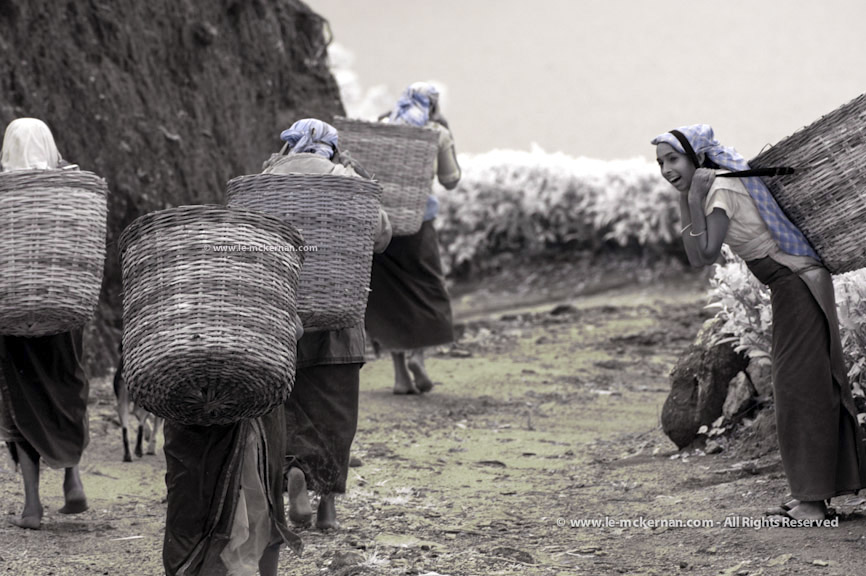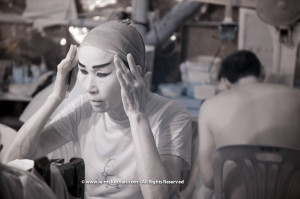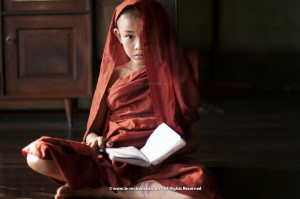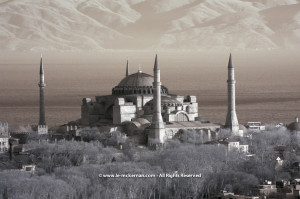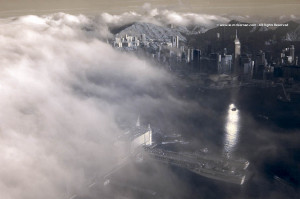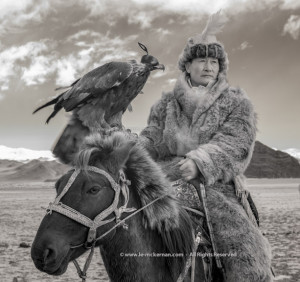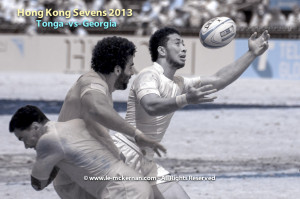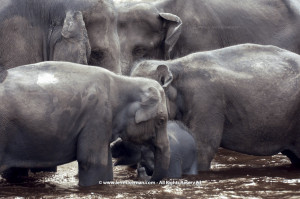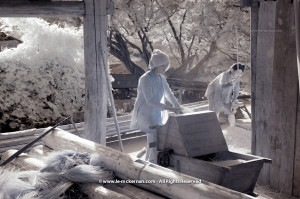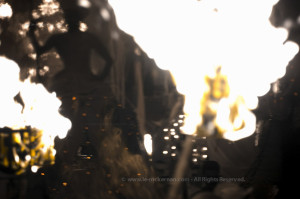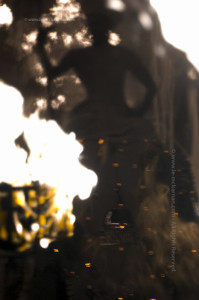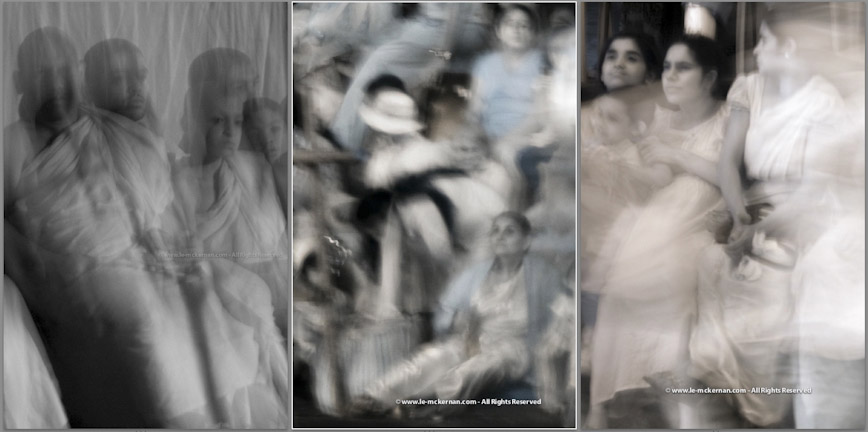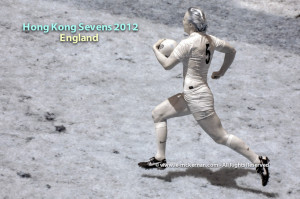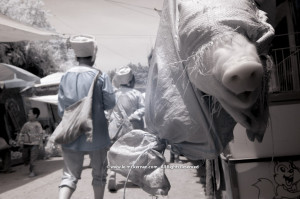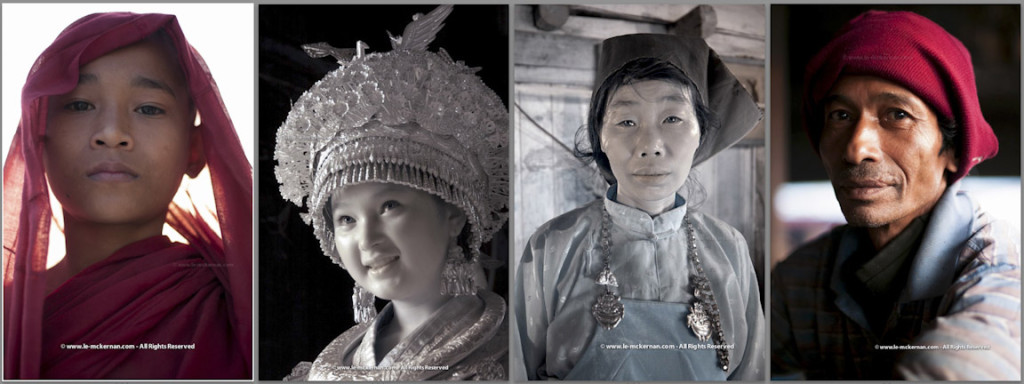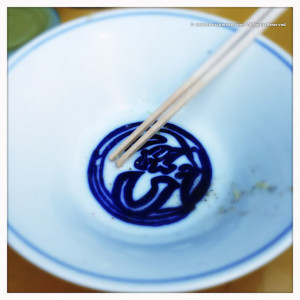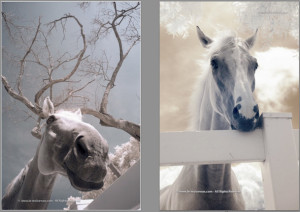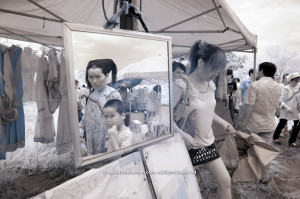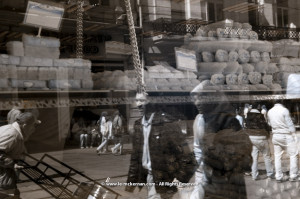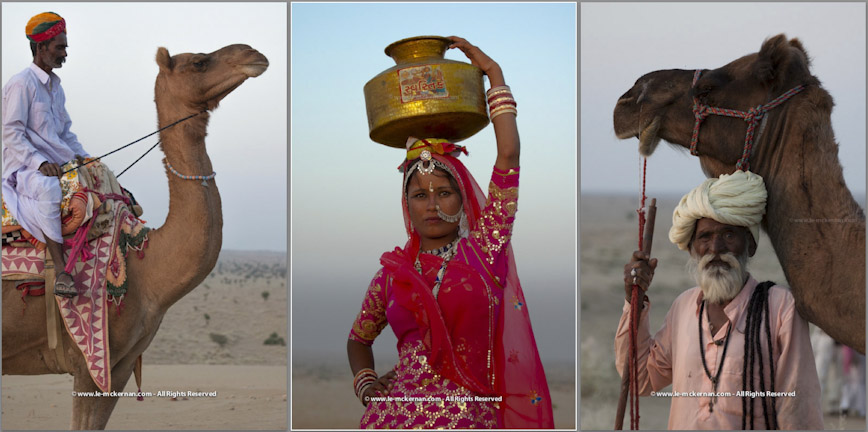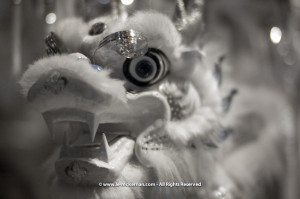Travel Blog – Sri Lanka
The seeds for the short weekend break to Sri Lanka were actually first sown in Uzbekistan during our 21-days travel along the Silk Road in 2010. Central Asia proved to be exhilarating but exhausting and during this trip, both Bruce and I decided that our next trip would be … more luxurious.
The criterion for the trip were: (1) it had to be close to Hong Kong because this was planned as a long weekend break during Easter and we didn’t want to waste time with long travels; (2) it had to be a place that was culturally interesting; (3) and it had to be somewhere we’ve never been to before. After many hours of internet research, I’d narrowed the options to either Sri Lanka or Bali, Indonesia. In truth, we almost decided on Bali because logistically it was easier (lots of direct flights) whereas with Sri Lanka, we had to transfer at Singapore. But the vote swung over to Sri Lanka once I started looking at the country in more depth. We wanted a luxury holiday as an antidote to the Silk Road trip and luxury was absolutely possible in Sri Lanka — especially in the Hill Country.
We stayed in a converted hotel bungalow with a magnificent view of the surrounding tea plantations and pristine lakes. Our goals during the 3.5 days stay were quite simple: to read books, to take short strolls along the tea trails, to eat well, and most importantly, to relax. Eating well was easily achieved as the hotel had a private chef who catered to all of our wishes (prior to arriving, I’d contacted the hotel to advise them that I would like a chocolate birthday cake to celebrate Bruce’s upcoming special day … and the chef produced the most amazing creation!) and relaxing was unavoidable as we had butler service and the staff looked after us very well.
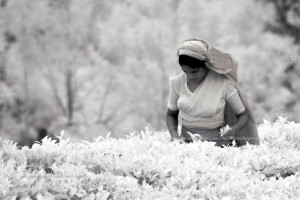


And of course, interspersed amongst the eating, relaxing and reading, we took advantage of our location to do short photography walks. Unfortunately, it rained often when we were there, however and thankfully, the downpour came in short bursts. More importantly, the rain cooled the afternoon heat and the moisture in the air enhanced the glorious landscape colours.
Sadly, the enjoyable weekend break ended rather quickly but both Bruce and I vowed that we would return again. Little did we know then that we would return to Sri Lanka just four months later! We typically don’t like to return to places because we like to find new travel experiences. That said, our short hop into the Hill Country was merely a quick introduction into one small facet of the country. As such, we felt no guilt returning again so soon thereafter.
On the advice of a friend who is a professional photographer and world traveler, we returned in August 2011 specifically for the Esala Perahera festival. Our friend predicted that the very nature of the popular festival would change in response to the surge in tourism following the end of the civil war. As such, it was her advice that if we wanted to see this festival, the time to do it was NOW before mass tourism spoiled it.

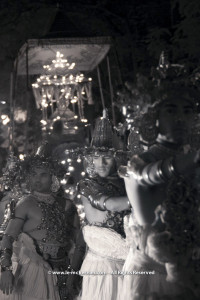
The night time festival spanned 10 days during which a procession of dancers, elephants, singers, musicians, etc. followed a route around Kandy. The highlight of the procession was the viewing of one of country’s holiest relics (the Tooth of the Buddha). The locals crammed along the procession route during the heat of the day to secure their viewing spot. For us (the tourists), we were there to see the festival; but for the locals, they were there to participate in a religious experience. As such, it was heartbreaking to see the devotees (particularly, the elderly) faint during the intense heat and be rushed away by the medical teams because it meant that they had lost their viewing position.
We timed our visit so that we would see the final three days. For the first two nights, we used the hotel seats because our hotel had the best viewing platform. On the third night, however, we decided to strike out on our own. It was a risk because we were not guaranteed a better location to photograph. But, we felt that we’ve exhausted the perspectives from the hotel seats and we wanted to capture the festival from a different angle. Unfortunately, all the seats along the festival processions were sold out and at one point we looked into purchasing a spot on someone’s balcony. Somehow, fortune bestowed a smile and we found a shopkeeper who had 2 seats directly on the street to sell. Needless to say it was costly. But, we managed to secure a great spot. (Word of caution: when we returned later that day to take our seats, the shopkeeper showed us seats six rows back from the street level; as a result, we protested and demanded a full refund. Given that we paid X times over the ‘official’ price, the shopkeeper relented and gave us the seats that he’d earlier promised.)
In short, the Esala Perahera was simply magical and I’m delighted that we followed our friend’s advice to go see it. Although I would love to go back and see the festival again, there is a part of me that is afraid to do a repeat. I fear that somehow a repeat won’t meet expectations — i.e. it would be hard to recreate that powerful magical first impression. That said, there is plenty more to Sri Lanka that Bruce and I have yet to visit. I understand that northern Sri Lanka is very different from southern Sri Lanka; likewise, central Sri Lanka (where we’ve been to) is vastly different from the other regions. As such, we have plenty of scope to make more (new) first impressions . . . . Succinctly, we’ll be back!
Videos:
Festival Tips:
- The festival procession last for hours so make sure you have dinner beforehand, and/or bring along snacks and drinks.
- Hotel rooms during the festival period book up quickly – for the best rooms, you may need to book up to 6-8 months in advance!
- The hotel with the best view is the Queens Hotel. Despite this, not all the seats have unobstructed views therefore you’ll want the front row or the seat adjacent to the street. A request to the front desk/concierge is not sufficient. If you want the best seats, you’ll need to tip the staff to guarantee the best seat.
- Seats alongs the procession route can be purchased privately; you’ll need to negotiate terms with the shop owners. It is advisable that you book seats as far in advance as possible as these are in high demands.
- The festival route is long and the procession moves slowly. As such, the festival continues well into the wee hours (especially the last night). Thus, for anyone who is a light sleeper, be sure to ask for a room away from the main street to avoid the street noise.
- Before the start of the festival, the mahouts scrub and wash their elephants near the temple grounds. Thus, this is an excellent opportunity to get close to (and photograph) the elephants at play.

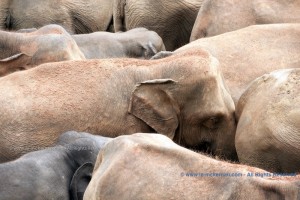
Photography Tips:
This festival was extraordinarily difficult to photograph. The first challenge is to find the optimal location with a good viewpoint. The second challenge is to suppress the gut inclination to use flash. Flash is often over-used and often used incorrectly. Photography with flash at this festival would be inappropriate as the harsh light destroys any sense of atmosphere and mystery. Instead, increase the ISO sensitivity, open the aperture, and/or decrease the shutter speed. Best to take sample shots of the crowd before the festival starts to get the right combination of ISO/aperture/shutter speed. In fact, some of my most interesting shots during the festival were taken during this experimentation phase.

+ + + +
Appendix: Please note that all of our travels are fully funded by ourselves. Without exceptions. As such, the opinions/ viewpoints/ recommendations/ critiques on this website are wholly our own and are not influenced by commercial interests.
For the Easter Break trip, we stayed at the Summerville bungalow managed by the Tea Trails (www.teatrails.com) and had the lovely Garnet Room garden suite.
For the Esala Perahera festival, we stayed at the Queens Hotel in Kandy. Unfortunately, we had problems with the reservation (despite multiple email confirmations) and thus it is highly recommended that anyone staying here double/triple check their reservation status. In addition, I would also advise visitors to plan their fire exit route once you’ve have checked-in as the hotel is vast and the walkways are somewhat confusing.
As we wanted to avoid the hassle of staying in Colombo and wanted to be reasonably close to the airport, we stayed at the wonderful W-esque The Wallawwa hotel (thewallawwa.com). It was a gem of a surprise — it was close to the airport but without the hullaballo and noise. The hotel is small enough to provide personalized serivce and large enough to exude a cool, modern and yet colonial charm of a great manor house. Furthermore, food was amazing and we enjoyed the spa.
For information on entry visa to Sri Lanka, this site may be helpful: http://srilankavisa.org
Tram’s TOP 20 images . . . .
This post actually started out as a simple (and private) exercise to pick out my absolute favourites and then to try to understand what it is exactly that I liked about them. The ultimate goal is to understand what makes a great photo and more importantly, what can I learn from my past images. I fully admit that many of the images I’ve selected have myriad technical flaws — but, this is a personal compilation and is therefore completely subjective. As this project has grown, I’ve added technical details (where needed) as well as the backstory to enliven the images. In addition to this, I’ve compiled a list of my favourite images that Bruce has taken … whether he’ll do his own TOP 20 list is depends on how much time he has …
(For my favourite RugbySevens images, please review this link.)
Tram’s pick of her TOP 20 images:
Nowadays I almost always photograph with either my converted infrared cameras or with my iPhones (predominately using the Hipstamatic app). My unconverted (or, normal) camera is usually left inside my camera bag and I tend to use this as a backup camera (if I remember to pack it). As such, it is therefore deeply ironic that my all-time favourite image was taken with a “normal” SLR camera.
This is a special image that still resonates because it was this image that gave me the confidence to photograph more. I owe a debt of gratitude: to my uncle Chris for inspiring me to pick up this hobby; to Bruce because we are sooooooo competitive and thus I’m always trying to take better photographs than him; to photographer Nevada Wier for convincing me that I should be shooting in RAW format instead of JPEGS (thankfully this was captured in RAW!!!!); and, to this mystery lady who really got me thinking that I could take decent images!
(2) I went to Cheung Chau island to photograph the annual Bun Festival. Unbeknownst to me, the municipality sponsored an opera to coincide with the festival. As I had hours to kill before the start of the festival, I used all of my American charm to curry favour backstage access. The performers and stage hands were wonderful! Although I was most definitely in the way (the backstage area was TINY!), they indulged me with their generosity and I was there for about an hour.
This image is particularly special as I was using my new D700 camera for the first time since it’s conversion to infra-red. Because the camera’s sensor still thinks it is capturing normal light (and infra is a different wave length), autofocus did NOT work. As such, I had to use LiveView to manually focus and LV is infinitely slower and very cumbersome. Furthermore, the lightening backstage was poor and came from harsh fluorescent bulbs. Needless to say, I was cursing at myself for ‘vandalising’ my new D700. But something just clicked and inexplicably I managed to get this amazing image. I simply love the way infrared captured this performer’s hands and how the light gives the makeup a mask-like appearance!
(3) A lucky shot! What more can I saw other than I was at the right place and at the right time. (And thank goodness the light in the arena was good — otherwise, the infrared camera would have it’s focus in a real twist!) This image encapsulates serendipity! And sometimes, that is what a photographer needs in his/her camera bag.
(4) I love, love, love this monklet! I was on a photography tour with Nevada Wier and we gatecrashed into a study hall at a monastery in Yangoon. The senior monk permitted us to photograph the monklets practicing their chants. They were all wonderfully photogenic (and patient with us!). But this monklet was a standout for me. I love the fact that he has an ink tattoo on his legs and that the red robe did not rob him of his boyish antics. This was an unstaged photo opportunity which meant that I had to work in a ‘real’ environment. The room was actually too dark for my normal day lens and I didn’t want to use flash as it would completely ruin the atmosphere (as well as piss off the other photographers). Thankfully, prior to this trip, Bruce convinced me to buy a 50mm lens which made a world of difference! I was able to crack open the aperture and take advantage of the late afternoon light coming in from a tiny window. (Thank you Brucey!!!)
(5) When I photographed the Haghia Sophia from afar, I didn’t realised how well the infrared camera would bring out the landscape in the background or how well it would render the Bosphorus. As such, the infrared light gave it a distinctive and other-worldly effect (almost something from ‘Game of Thrones’). In effect, it gave an much beloved (and much photographed) iconic building a unique twist.
(6) Backstage at the opera at the Cheung Chau Bun Festival (again). After the success of the previous year, I returned in 2013 as I wanted to photograph the performers again — but this time with my iPhone (Hipstamatic – lens: Tinto 1884; fils: C-Type Plate; no flash). I’d focused on the face and the Hipstamatic application did the rest. I just loved the way Hipstamatic blurred everything other than the focal point. As a result, this gave the performer an immediate virtual spotlight!
(7) This was an once-in-a-lifetime image for me …. and I almost missed the opportunity. I was due to meet up with Bruce and a friend at a bar for evening cocktails and I almost didn’t take my camera along. Although a D70s isn’t huge, it is rather clunky to carry for an evening event. But something told me to take the camera with me. So, in addition to having a healthy dosage of serendipity in my camera bag, I also have to thank the photography gods for giving me good intuition!
(8) I just love the way infra-red captured the texture of the fur coat as well as the horse mane. This gives the image a depth and a uniqueness. But this image has a special story attached to it. As a digital photographer, it is easy to become numb during the image-processing phase (especially when there are hundreds of images to scope). As such, it is very easy to overlook an image. This particular image was one that was bypassed. Many months after the initial processing, I’d reviewed some other images and noticed this one. As I developed the image, it occurred to me how special and beautiful it us. As such, this image serves as a cautionary tale.
(9) “Will he? Won’t he?” . . . I love the way this image tells a story at a precise moment in time. Of the thousand of images I’d taken that day, this is still my clear favourite because in one image, I see: hope, fear, aggression, and possible salvation.
(10) This image is a standout for me for two reasons. First, I love the texture of the elephants’ skins and the way the light bounces off the wet patches on the skin. Second, I love the composition — especially in the way the two adult elephants are in profile, adjacent to each other and perfectly aligned to form a visual trickery. Specifically, the two elephants appear to merge together and as a result, a frontal view of a “face” appears.
(11) I just love the way my infrared camera captures light — especially when the subject is backlit. In addition, I love the various textures captured in this image. As a result, this becomes a richly layered image for me.
(12) This image (uncertain if it is better in portrait or landscape mode) is a ‘love-it-or-hate-it image’ because there are many technical flaws. Personally, I love it. Perhaps it is because I know that this was a technically challenging event to photograph and as such, to get an image like this one is personally rewarding.
The Esala Perahera festival in Sri Lanka was an evening festival. Moreover, it was a crowded event and as spectators, Bruce and I were confined to our seats (five rows back from the street and with people all around us). As such, we had to photograph where we were planted — we could not move, shoot high or shoot low. An extra challenge I had was that I was photographing with my D70s and it was recently converted to infrared. In insufficient light, an infrared camera would clonk out as it could not focus properly. In addition, my D70s was a starter camera and as such I could not crank up the ISO without getting a lot of background noises. Thankfully, we were there for three days and had three opportunities to photograph the festival.
I love the way the infrared camera captured the heat haze. In addition, I love the way the mahout is enveloped in heat, fire and light. The setting is almost demonic and hellish. It is surreal. It is eye-catching. Love it or hate it, it’s the kind of image that if you saw it in a magazine, you would stop to ponder it for a few seconds — this is a hallmark of the kind of photograph that I want to take!
(13) I know it’s cheating to count a set of three images as one image, but these three images form the basis of my ‘Sri Lankan Victorian Ghosts’ portfolio and now serve as the foundation for my experimental infrared images. They are on my list of top images because they are hugely important and very influential in my development as a photographer. The absolute truth is that these were mistakes — and I actually came _very_ close to deleting them. But, once again I owe a debt of gratitude to Nevada Wier who gave me very sage advice: don’t delete an image straight from your camera; always view the image on a proper screen first before deciding that the image is truly unsalvageable. (Thank you x100 Nevada!) The morning after the Esala Perahera festival, I’d reviewed my images and I was quite struck by the elderly lady sitting on the street (middle photo in the set). There was an etherial and ghostly beauty and I was captivated.
As previously mentioned, the above images were ‘mistakes’ in that the effects were unintentional. Due to the poor lighting of the street festival, I had to crank up the ISO, reduce the shutter speed and play around with the aperture. In addition, I could not use a tripod and therefore my images were subjected to camera shake. Nonetheless, I love the outcome. Nowadays, after I have taken my ‘insurance shot’ (another great tip from Nevada), I now try to play around and replicate what I’d accidentally did in Sri Lanka . . .
(14) While I love this image because it is beautiful (the image speaks for itself), this image is on the list because it played a huge role my development. First, it gave me confidence that I could translate what I see into something photogenic. Second, it seriously broke my heart.
When this photograph was taken, I was very much a novice with my camera’s functions. As a result, I relied heavily on it’s preset modes (i.e. auto, landscape, portraits, night images, etc.). At the time, I told myself that (unlike geeky Bruce) I really didn’t need to master shutter speed, depth of field, etc. because I had a smart camera (Nikon D70s) and thus as long as I had the correct setting, I would be all right. WRONG! I think I was photographing this in either landscape or portrait mode. Regardless, the shutter speed was 1/60 second and as such, the woman’s face was too soft. (Image has since been sharpened in Photoshop.) I’d cursed myself repeatedly for being so foolish and as a direct result of this image, I forced myself to learn how to use my camera and more about photography.
(15) In this image, the model was getting quite bored. For the past 10 minutes, she was “working the cameras” for the roomful of photographers. At first, she was thrilled to be the center of attention. But, as the click-click-click became monotonous, she started to become disinterested and lost her focus. And from this came an unguarded moment which resulted in this beautiful portrait.
(16) I am particularly fond of this image because it is unstaged and spontaneous. Bruce and I were hosted by Manaa and his family for seven nights in western Mongolia. Our host was a champion Eagle Hunter and therefore was very comfortable (and proud) to be photographed. After a meal, he gazed out of the window. I had my iPhone next to me and I immediately took a few snaps using Hipstamatic (lens: Tinto 1884; fils: C-Type Plate; no flash) to capture the moment. Of the many, many, many images that I’ve taken on Manaa over the week, this is my clear favourite because it showed him in his true light — dignified and serene!
(17) ‘Go Girl! Go!’ My heart still skips a beat when I see this image as it is very simple and yet very empowering!
(18) I love my iPhone because it is perfect for a quick snap. In particular, I love the way Hipstamatic (Tinto 1884 lens and D-Type film) gave this image a vintage feel. As such, Hipstamatic transformed a interesting picture (with the odd juxtaposition of old and new) into something more cohesive. In other words, the vintage effect reinforces the narrative and thus reinforces the odd juxtaposition.
(19) This image would never quality as ‘postcard pretty’ — and this is why I love this photograph. It is unconventional and it is a realistic capture of everyday life in the markets somewhere (anywhere) in China. I particularly like the flow in the image — ie the eyes are taken from right to left — and that the image is richly layered.
(20) I love the intimacy and sense of serenity captured in this moment with the Eagle Hunter. The extra zing in this image comes when one contrasts the hunter’s softness with the sharpness, strength and power coming from the eagle.
. . . and other favourite images that didn’t quite make it onto the Top 20 list, but are still special (to me) nonetheless . . .
(21) Although there are many technically stronger images of this horse wrestling match in the Kyrgyzstan album and although this image is compositionally weak, I prefer this image above the others because for some inexplicable reasons, I connect with this image more. Perhaps it is the expression on the face … Or, it is because there is a fluidity in his movement (ie the rider leans back and away from the ‘horse head punch’) that appeals. Regardless, this image challenges me because I can’t quite explain why I like it so much.

Bruce has often said that he’d envied my American “unembarrassability” as this enabled me to ask complete strangers for their permission to photograph them and/or, to get really up-close to the subject (rather than rely on zoom lenses). As such, he said that this characteristic makes me a stronger portrait photographer. While I appreciate his compliments, his portraits aren’t too bad either :>) … In fact, some of his are actually amazing – to see Bruce’s best portraits, please click here.
This image didn’t make onto the Top20 list because it was instinctively captured as a Mongolian horseman flew past me. The backstory behind this image was that I have just taken my “insurance shots” of the Mongolian riders playing their horse games. As such, I decided to be artsy-fartsy instead and experimented with shutter speeds. In addition, I tried to do a few panning shots as the horsemen raced by. During a lull, I was speaking to Bruce and in the distance I saw a horseman racing towards my direction. Without thought, I immediately grabbed my camera and started to take shots. Sadly, the shutter speed was 1/30 second so of the four images I managed to snap, all but one were streaks of blurred blah. But in a sea of blah, this stunning image emerged.
This isn’t a complex image; in fact, it is nothing more than a bowl with what was left from THE BEST RAMEN NOODLES I’ve ever had (street vendor on the main street adjacent to the Tokyo Fish Market). Nonetheless, I love the simplicity, symmetry, colours and patterns in this image (iPhone-Hipstamatic: Tinto 1994 lens and Blanko film).
(( kindly note that this list is currently “work in progress” ))
